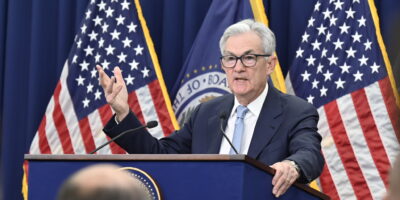Reserve Holdings and the Size of the Fed’s Balance Sheet
In a recent post at FT, Sam Flemming documents growing concerns among some former Fed officials that the Fed “risks political interference and losing its independence if it maintains a large balance sheet in the longer term.” I’ve discussed the increase in the size and composition of the Fed’s balance sheet before. More recently, George Selgin has recommended shrinking the balance sheet in a predictable, stable way. I think the Fed should shrink its balance sheet, returning to normal levels. But, today, my task is much narrower than making that case. I merely want to argue that one common argument for why the Fed should not shrink its balance sheet is nonsensical.
As Flemming writes, some economists opposed to shrinking the balance sheet “predict that the balance sheet will need to stay at $3tn or more as commercial banks’ reserves at the Fed remain far above pre-crisis levels.” (emphasis added) In this view, the Fed should not shrink its balance sheet because reserves held at the Fed are too large. As I think you will soon see, that makes absolutely no sense.
When the Fed purchased the assets that are now on its balance sheet, it created digital balances to pay for them. Those digital balances (i.e., reserves) were deposited in the accounts that the sellers (i.e., banks) have at the Fed. For this reason, a graph of the Fed’s balance sheet looks a lot like a graph of the monetary base, which is comprised of currency and reserves held at the Fed. The first shows the value of what has been purchased. The second shows the value of what has been spent to make those purchases.
Typically, when the Fed purchases assets, banks see their reserve ratios—that is, the ratio of reserves to deposits—increase above their desired reserve ratios. To achieve its desired reserve ratio, the bank will increase its lending. When it makes a loan, the lending bank sees its reserves shrink. But where do these reserves go? The borrower gets the loan, spends the funds, and those funds get deposited into some other bank. One bank’s reserves falls and another bank’s reserves increase by the same amount. Now, the second bank has a reserve ratio that is greater than its desired reserve ratio and another iteration of the lend-spend-deposit process begins. The process continues until each bank is satisfied with its reserve ratio.
Note that each bank becomes satisfied with its reserve ratio not because the quantity of reserves has fallen—we’ve just moved those reserves around and around and around again. Rather, it is because the amount of deposits has increased. Indeed, banks cannot shrink the amount of reserves in the system. Where would they go? An individual bank can decrease its own reserves, but only by causing the reserves of some other bank to increase. The quantity of reserves in the system is unchanged.
How, then, can the amount of reserves in the system shrink? Simple: by reversing the process that increased the amount of reserves in the first place. That is, to reduce the amount of reserves in the system, the Fed must shrink its balance sheet. When the Fed sells the assets it holds, banks purchasing those assets from the Fed use reserves to pay for them. Hence, reserves held by banks at the Fed fall as the balance sheet shrinks. Again, we are just looking at two sides of the same transaction.
Hopefully you can now see why the argument described by Flemming is nonsensical. Reserves are greater than they were before the crisis because, beginning in 2008, the Fed created more reserves. It did so in the process of expanding its balance sheet. Reserves will not fall—indeed, cannot fall—until the Fed shrinks its balance sheet.










